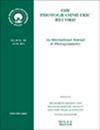最小二乘法的理论
IF 3.6
3区 地球科学
Q2 GEOGRAPHY, PHYSICAL
引用次数: 6
摘要
本文从矩阵代数的角度,给出了最小二乘法中几个重要结果的推导。以下主题包括:正规方程的推导及其解;残差;标准误差估计;依赖的未知数;未知数最小二乘估计的概率分布。本文章由计算机程序翻译,如有差异,请以英文原文为准。
THE THEORY OF THE METHOD OF LEAST SQUARES
This paper gives derivations of some of the more important results in the method of least squares in terms of matrix algebra. The following topics are covered: derivation of normal equations and their solution; residuals; estimation of standard errors; dependent unknowns; probability distribution of least-square estimates of unknowns.
求助全文
通过发布文献求助,成功后即可免费获取论文全文。
去求助
来源期刊

Photogrammetric Record
地学-成像科学与照相技术
CiteScore
3.60
自引率
25.00%
发文量
71
审稿时长
>12 weeks
期刊介绍:
The Photogrammetric Record is an international journal containing original, independently and rapidly refereed articles that reflect modern advancements in photogrammetry, 3D imaging, computer vision, and other related non-contact fields. All aspects of the measurement workflow are relevant, from sensor characterisation and modelling, data acquisition, processing algorithms and product generation, to novel applications. The journal provides a record of new research which will contribute both to the advancement of photogrammetric knowledge and to the application of techniques in novel ways. It also seeks to stimulate debate though correspondence, and carries reviews of recent literature from the wider geomatics discipline.
Relevant topics include, but are not restricted to:
- Photogrammetric sensor calibration and characterisation
- Laser scanning (lidar)
- Image and 3D sensor technology (e.g. range cameras, natural user interface systems)
- Photogrammetric aspects of image processing (e.g. radiometric methods, feature extraction, image matching and scene classification)
- Mobile mapping and unmanned vehicular systems (UVS; UAVs)
- Registration and orientation
- Data fusion and integration of 3D and 2D datasets
- Point cloud processing
- 3D modelling and reconstruction
- Algorithms and novel software
- Visualisation and virtual reality
- Terrain/object modelling and photogrammetric product generation
- Geometric sensor models
- Databases and structures for imaging and 3D modelling
- Standards and best practice for data acquisition and storage
- Change detection and monitoring, and sequence analysis
 求助内容:
求助内容: 应助结果提醒方式:
应助结果提醒方式:


